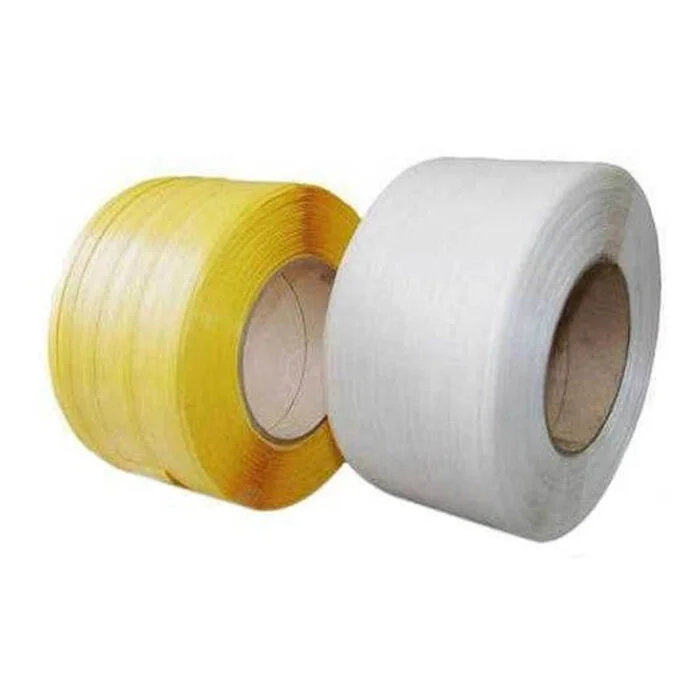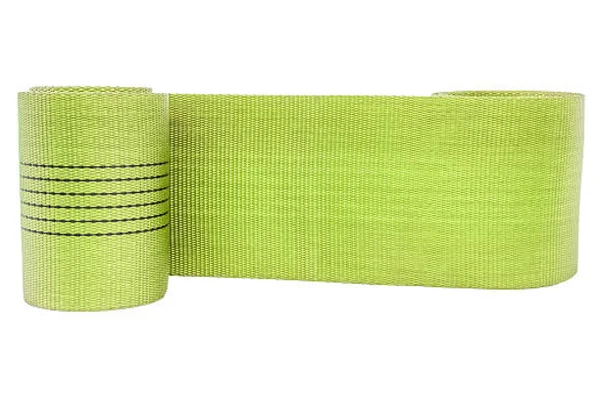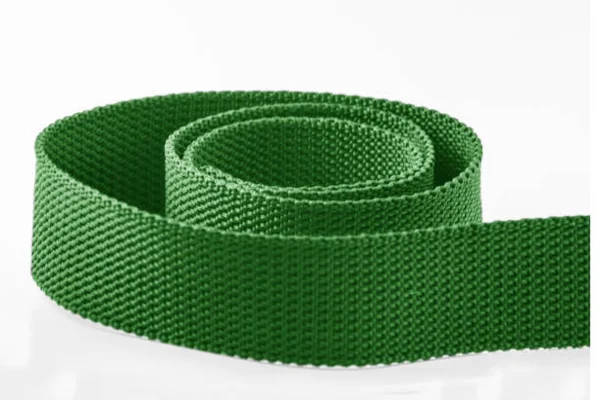Best polypropylene strapping by Hadanco UAE

Polypropylene strapping, commonly referred to as PP strapping, is a versatile and cost-effective solution widely used in various industries for securing and bundling products. As businesses and individuals seek reliable methods to ensure the safe transportation and storage of goods, PP strapping stands out due to its combination of strength, flexibility, and ease of use. In this article, we will explore the characteristics, benefits, and diverse applications of polypropylene strapping, highlighting why it has become a preferred choice for packaging and logistics solutions.
What is polypropylene strapping (PP Strapping)?
Polypropylene strapping (PP strapping) is a plastic strapping material derived from polypropylene, a thermoplastic polymer.
It is frequently used for securing and packing things in a variety of industries due to its low cost, ease of use, and adaptability.

polypropylene strapping
Key Features of PP Strapping:
- Material:
Made of polypropylene, a lightweight and flexible material recognised for its strength and durability.
- Strength:
Has a high tensile strength, making it ideal for securing a wide range of objects.
- Flexibility:
Able to wrap around various shapes and sizes of goods without breaking.
Resistance to dampness, chemicals, and UV radiation ensures long-term performance.
- Ease of Use:
Can be applied with manual, semi-automatic, or automatic strapping tools and machinery.
- Cost-effective:
Generally less expensive than alternative strapping materials, such as steel or polyester.
💥Buy now polypropylene strapping💥👈click here
What is polypropylene strapping used for?
Polypropylene strapping, often known as PP strapping, is widely utilized in a range of sectors due to its strength, flexibility, and low cost.
Here are some common applications:
Packaging:
PP strapping secures boxes and cartons for shipping, keeping contents intact during travel.
- Bundling Packages:
It facilitates the bundling of many packages, making them easier to handle and carry.
Palletizing:
- Stabilizing Loads on Pallets:
This involves strapping products onto pallets to prevent them from shifting or falling during transit.
- Securing Pallet Covers:
Strapping can be used to keep covers or protective wraps on palletized products.
Bundling:
- Newspapers and magazines:
This is a common way to bundle newspapers, magazines, and other printed items for distribution.
- Construction Materials:
Pipes, lumber and metal rods are bundled together for convenient handling and transportation.
- Agricultural Products:
Used to secure bales of hay, straw, and other agricultural commodities.
Retail:
Bundle and secure products in retail settings, including electronics, appliances, and furniture.
- Display and Storage:
Straps are used to secure and display objects in retail situations.
Industrial:
- Industrial equipment security:
Involves strapping machinery and equipment components for safe transportation and storage.
- Bulk Material Packaging:
Perfect for strapping components and bulk items in manufacturing and industrial environments.
Transportation and Logistics:
- Shipping and Freight:
PP strapping is used to secure shipments and items, guaranteeing the effective and safe transit of goods.
- Cargo security:
Assists in keeping cargo in railcars, trucks, and containers secure to avoid movement or damage while in transportation.
What is the difference between PP and PET strapping?
Polypropylene (PP) and polyethylene terephthalate (PET) strapping are both popular materials for securing and bundling objects in a variety of sectors, but they have distinct qualities and best suited to different uses.
Here are the main distinctions between PP and PET strapping:
Material Composition:
PP Strapping made of polypropylene, a thermoplastic polymer noted for its flexibility and economic effectiveness.
PET Strapping made of polyethylene terephthalate, a form of polyester recognised for its excellent strength and longevity.
Strength and durability:
- PP Strapping:
Tensile Strength: Moderate tensile strength, appropriate for light to medium loads.
- Durability:
Less durable than PET; may disintegrate after prolonged exposure to UV light and high temperatures.
Flexibility and elasticity:
- PP Strapping:
Flexibility: It is more flexible and simpler to handle, making it ideal for applications that need tight wrapping.
Elasticity: Higher elasticity might be useful for loads that expand or contract.
- PET Strapping:
Flexibility: Less flexible than PP, but still suitable for most purposes.
Elasticity: Lower elasticity ensures a more steady and secure grasp over time.
Cost:
PP Strapping is generally less expensive, giving it a better choice for situations with a limited budget.
PET Strapping is more expensive due to its higher strength and longevity.
How to get Strapping Materials 👈💥click here💥

polypropylene strapping
Go search strapping materials from Hadanco, and follow these steps:
Research and Identify Needs.
- Determine Requirements.
Determine the type of strapping material you require (PP or PET strapping, steel strapping, etc.), the quantity, and any special requirements or specifications.
- Visit Hadanco’s Website:
Visit Hadanco’s official website to discover more about their product options and strapping materials.
Contact Hadanco.
- Customer Service:
Contact Hadanco’s customer support staff for assistance.
Their website normally includes contact information such as phone numbers, email addresses, and contact forms.
- Request information:
Request complete information on the strapping materials, including product specifications, pricing, and availability.
In conclusion, polypropylene strapping from Hadanco proves to be an invaluable asset in the realm of packaging and logistics. Its unique blend of strength, flexibility, and cost-effectiveness makes it an ideal choice for securing and bundling a wide array of products across various industries. From light to medium loads, PP strapping provides reliable performance, ensuring that goods transported and stored safely and efficiently. Its resistance to moisture and chemicals, coupled with its ease of use, further enhances its appeal. As businesses continue to seek practical and economical solutions for their packaging needs, polypropylene strapping stands out as a versatile and dependable option that meets the demands of modern supply chains.
